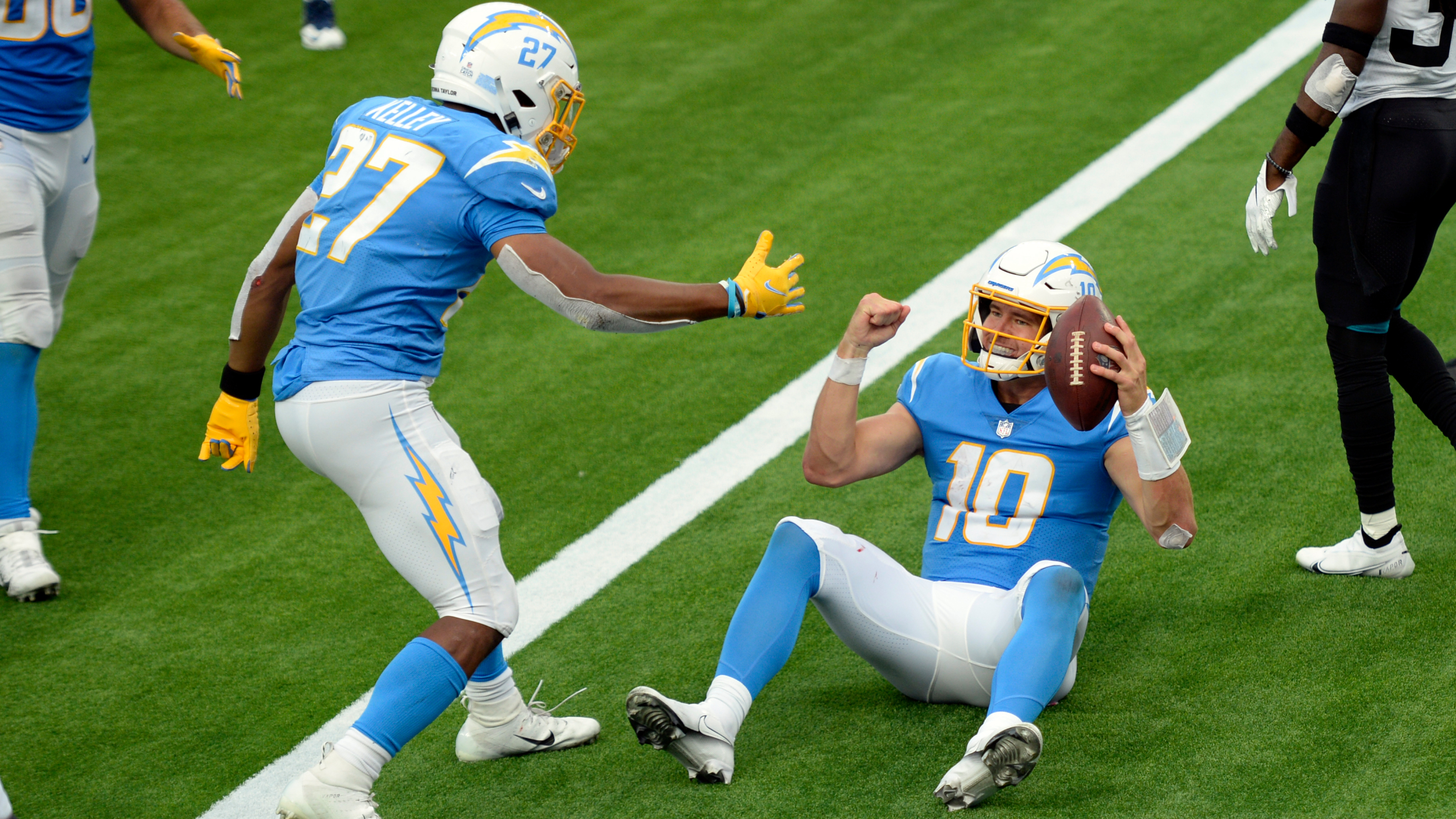
By this point in the season, most of us have an idea of where we stand in the playoff race.
If not, it’s certainly time to look in the mirror and be realistic about your chances.
This moment of clarity regarding our prospects of making the playoffs can be disappointing or elating, depending on where we fall. But the great thing about dynasty is that we are always looking to make improvements, either long-term or short-term, depending on our position leading up to the playoffs.
Now, I realize that some dynasty leagues have this thing called a “trade deadline”. For what it’s worth, I’m strongly against trade deadlines. Unfortunately, that’s another rant for another day. So hopefully you’re in a league that’s letting you trade at the moment. And if your moment has passed, let this be the time to push for the abolition of the tyrannical deadline next season.
For those of us still in the thick of it for the title this year, we should be doing what we can to gain the advantage over our constantly diminishing field of competitors. We obviously want to be careful not to sacrifice too much long-term value for short-term gains, but we also play to win the game as the great Herm Edwards would remind us.
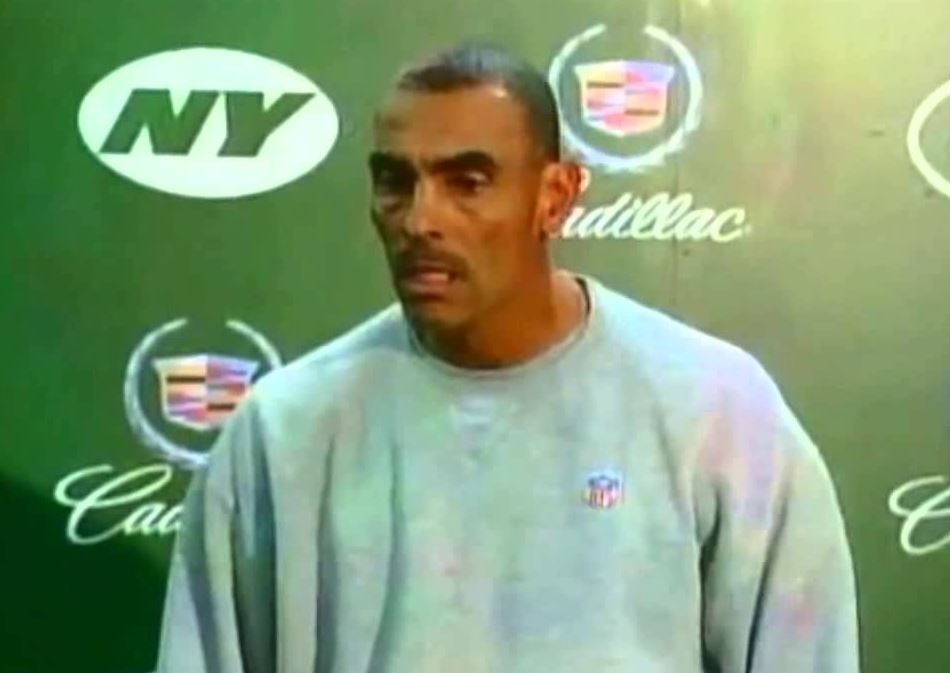
Now, if you’re lucky enough to have leaguemates shipping off aging vets like Aaron Rodgers, Julio Jones and Travis Kelce at a reduced price since they’re playing for next season — cheers! These highly-productive stars could be exactly what your team needs to go from good-to-great.
But the reality is that more often than not, we are forced to pay-up for production if we are chasing titles. No one likes to “buy high”; it’s far easier and less risky to “buy low”, but if you buy high on the right players you can win this year — and seasons to come. Plus, when trading, we want to try to come away with the best player every time. It won’t be cheap, but with the right package of “middle men”, prospects, and picks, it will appear lopsided in our favor looking back in five years.
With that in mind, let’s take a peek at a buy high candidate for each position with the criteria that they are still young, have demonstrated the ability to produce consistently, and their stock will continue to rise.
Quarterback: Justin Herbert, Los Angeles Chargers
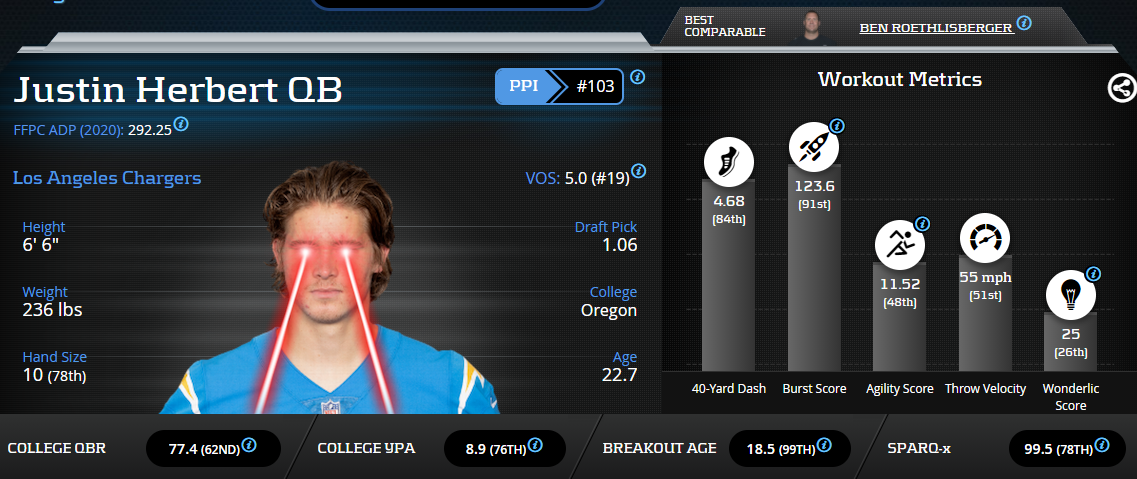
Truthfully, I rarely pay-up at quarterback, even in Superflex leagues, but if we’re going to pay-up for a guy, Justin Herbert has everything we want in a cornerstone fantasy quarterback. Herbert has been so good this year that even when he’s struggled on the field, he’s still scoring fantasy points. A quick look at his game logs shows that he’s been over 20 fantasy points in every game but one.
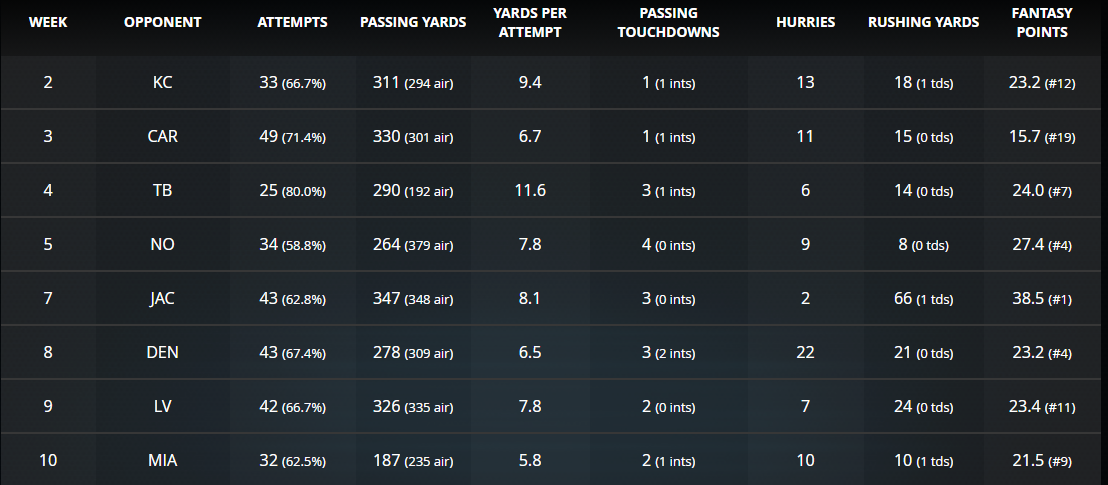
As a rookie entering the league, he already boasted an elite breakout age of 18.5 (99th) with solid athleticism as shown by his 4.68 40-Yard Dash (84th) and 123.6 Burst Score (91st). But since taking the reins in Week 2, he has flashed exceptional passing and rushing ability. What stands out immediately are his 21 Money Throws (No. 2). Every week he is showing off the talent to make difficult throws look easy.
Herbert is also demonstrating poise that rookies frequently lack with his 52.3 Pressured Completion Percentage (No. 5), which is especially impressive considering the struggles of his offensive line as seen in his 77.4-percent Protection Rate (No. 29). Sure, his passing game has a few areas that need improvement, like his middle-of-the-road Accuracy Rating of 7.4 (No. 15) and his lowly 52.5 Red Zone Completion Percentage (No. 37). These areas aside, Herbert has given us a picture of a passer who makes big throws and shows composure in an often collapsing pocket. He’s only going to get better as a gunslinger.
What about rushing, you ask?
Well, Herbert has us covered there too.
He’s already taken in three scores on the ground (No. 5) and has 176 rushing yards (No. 10). Where we can get excited in forecasting his future production, though, is that he runs 4.6 times a game (No. 9) and often calls his own number when he needs a score with 1.1 Red Zone Carries a Game (No. 10). He isn’t Lamar Jackson by any means, but we can envision Herbert racking up consistent points on the ground for years to come.
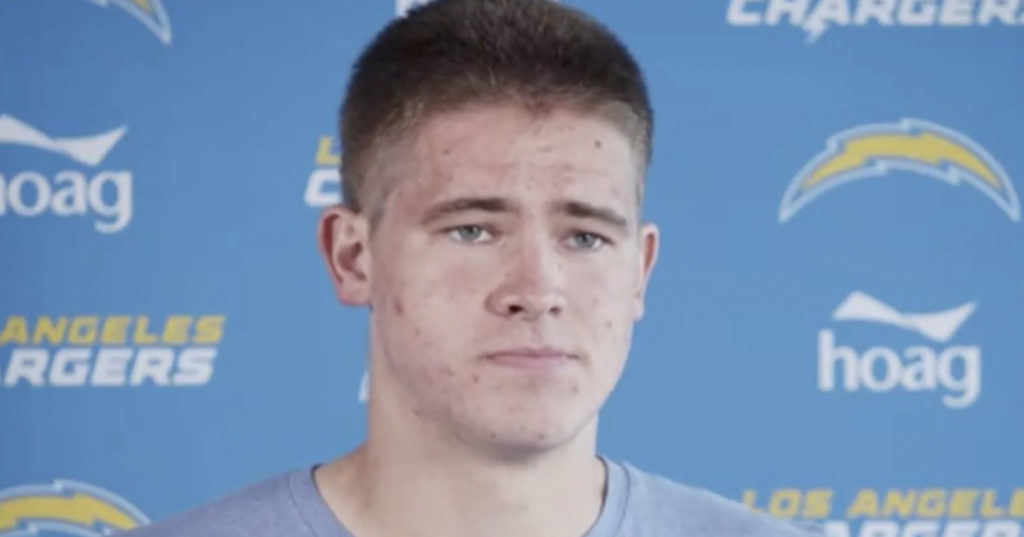
Really, there is only one major concern about Herbert in my mind: Was his hair a Sampson-type thing? Will he lose his strength now? Because only some magic like that can keep him from being a perennial QB1 in dynasty.
Running Back: De’Andre Swift, Detroit Lions

Moving on…
Running Back: Antonio Gibson, Washington Football Team
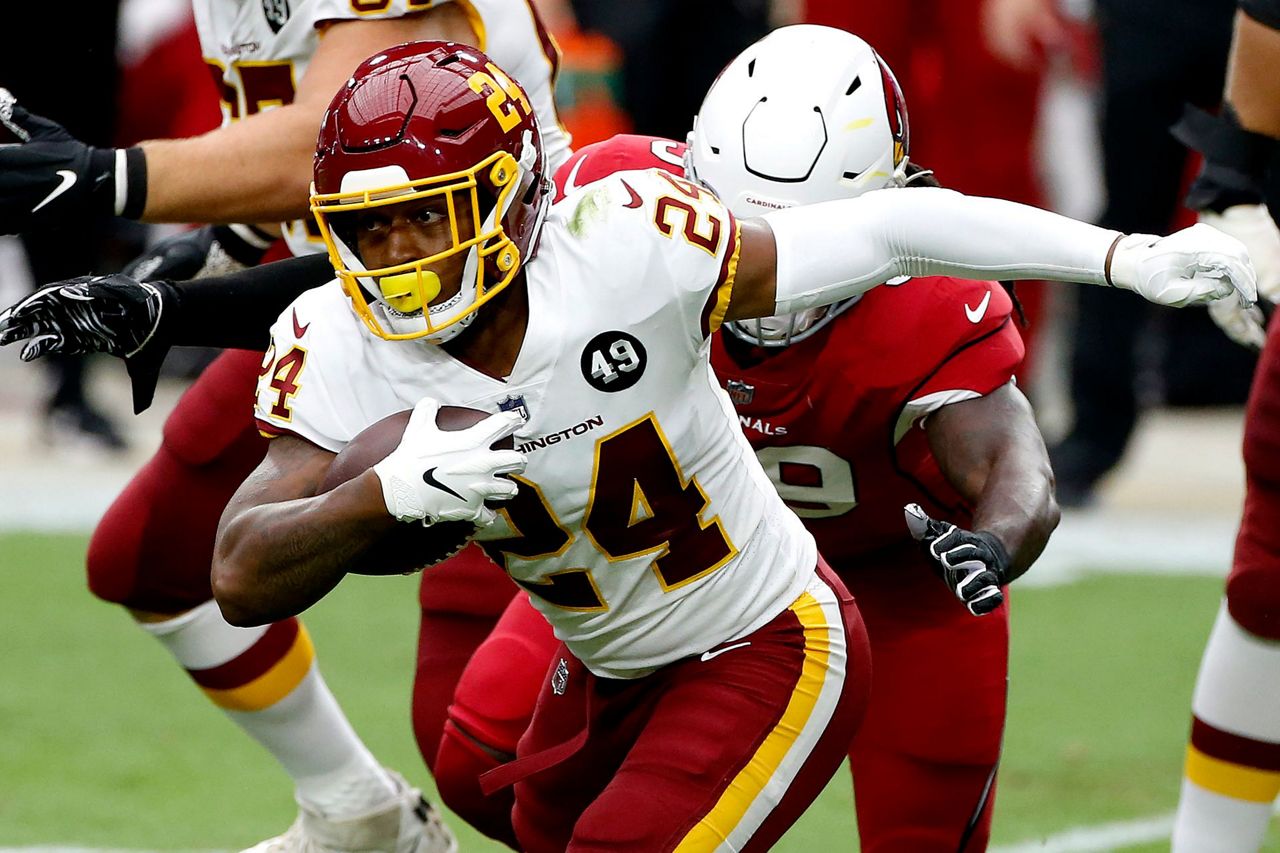
Coming out of Memphis, Gibson was a total projection. A wide receiver converting to running back with only 33 total collegiate carries will always be a projection, after all. Because of this, we had to do a bit of imagining.
How long might it take for Gibson to get up to speed and learn the position?
What type of running instincts did he possess?
Would Washington commit to him as a bellcow, or use him as a gadget player?
There was so much that we didn’t know. Gibson, however, didn’t seem to care what the NFL or fantasy industry thought of him, and has proceeded to tear it up.
Now, the concern about whether or not Washington views him as a bellcow is legitimate. His snap share is a worryingly low 46.4-percent (No. 34), leading to only 108.9 Weighted Opportunities (No. 20). J.D. McKissic has also carved out a substantial receiving role with his 62 Targets (No. 2), 41 catches (No. 3), and 291 receiving yards (No. 2). But despite all of that, Gibson has plenty to give us hope.
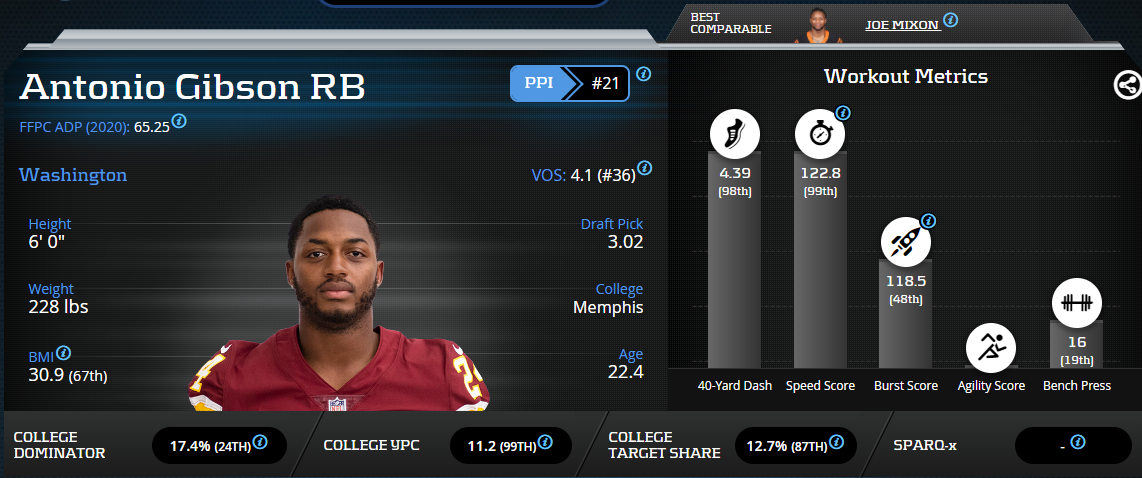
For one, McKissic is running a high amount of snaps (38, No. 2) in the slot, leaving open the opportunities to get both players on the field. Additionally, Gibson has been solid in the passing game. When given the opportunity, he shines with his 1.84 Yards Per Route Run (No. 8) and 86.7-percent Catch Rate (No. 7). He is a former wide receiver after all.
Most importantly (since we already knew he could catch), Gibson has run the ball well:
While his 4.1 True Yards Per Carry (No. 33) seem disastrous, we can easily chalk that up to Washington’s abysmal Run Blocking Efficiency of 63.1 (No. 50) for Gibson. When given running lanes, he has been elusive with 37 Evaded Tackles (No. 9) on his way to 200 Yards Created (No. 12). He has also been used when it matters garnering 7 Goal Line Carries (No. 5) and scoring 7 times (No. 6).
Washington has comically given Peyton Barber 40 carries this year but mercifully, his involvement has diminished over the past two weeks. All signs point to Gibson taking more and more of the Washington rushing attack, making him a perfect buy high before his price increases more.
Wide Receiver: Terry McLaurin, Washington Football Team
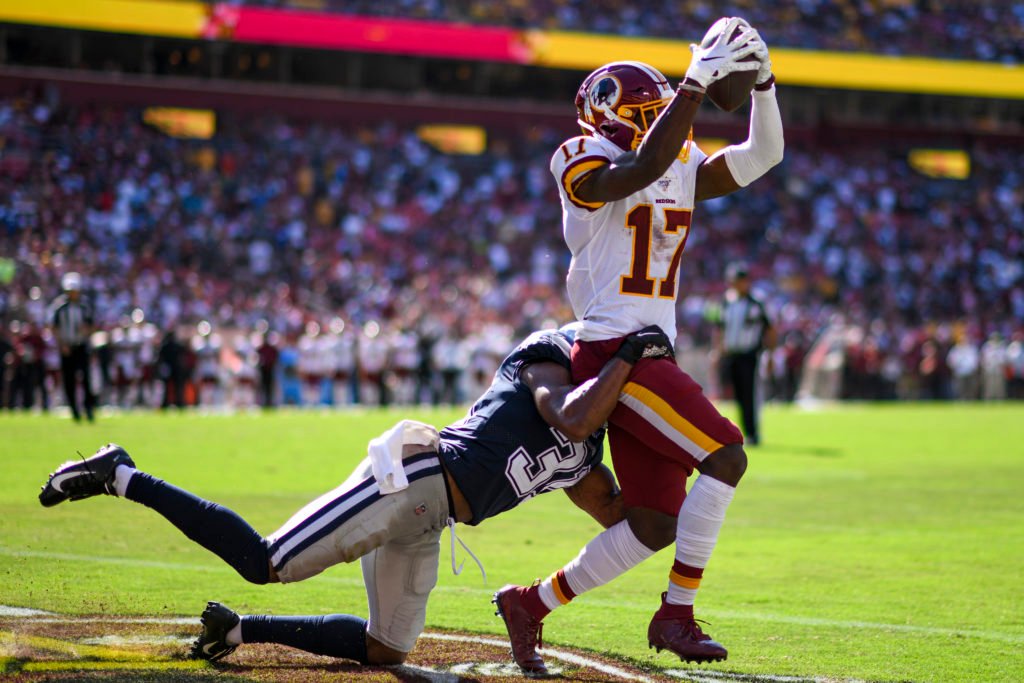
Who thought Washington could be so fun in dynasty?!? And yet, we have another exciting “buy high” candidate. How did Dwayne Haskins fail here?
Looking ahead, we can only hope that Washington lands a competent starting quarterback sooner rather than later. In the meantime, we must simply sit back and enjoy the masterpiece that Terry McLaurin is painting for us. A little Haskins? Scary Terry is here to score points. Kyle Allen? F1 McLaurin is going to ball out. Alex Smith even? Call him whatever you’d like, it doesn’t matter to him, because McLaurin is going to terrorize defenses.
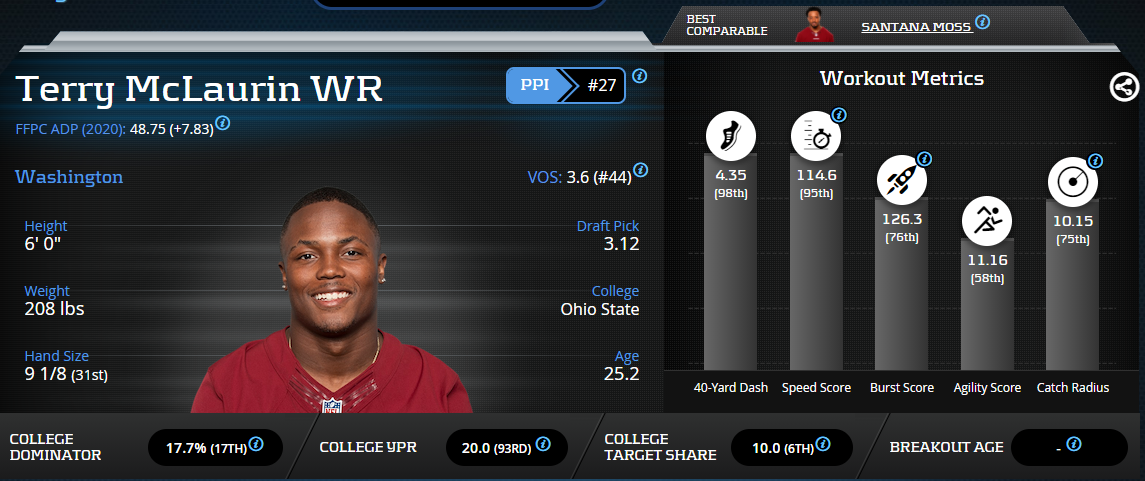
In his second year out of Ohio State, McLaurin has translated his blazing 4.35 speed (98th) into consistent production. THE BREAKOUT FINDER eyed him early as a nice mid-round pick due to his 29.7 Breakout Rating. He has established himself as a bona fide alpha receiver despite suffering from terrible quarterback play, evidenced by a Catchable Target Rate of 72.1-percent (No. 76).
Honestly, where are they even throwing it?
Fortunately, when they do find him he runs for days with his 381 Yards After the Catch (No. 1).
Even with uncatchable targets and drawing the top corner from each opponent, McLaurin has delivered. He’s 4th in receiving yards with 787, but what makes that even more impressive is that he has 447 Unrealized Air Yards (No. 9), indicating that with even slightly better quarterback play he could go nuclear (please, oh please, let Washington draft a good passer).
He has so completely dwarfed his teammates with his 41.0-percent Air Yard Share (No. 2) and 33.8-percent Dominator Rating (No. 7) that we must wonder if they’re all just giving up on their routes so they can watch the magic for themselves.
Tight End: T.J. Hockenson, Detroit Lions
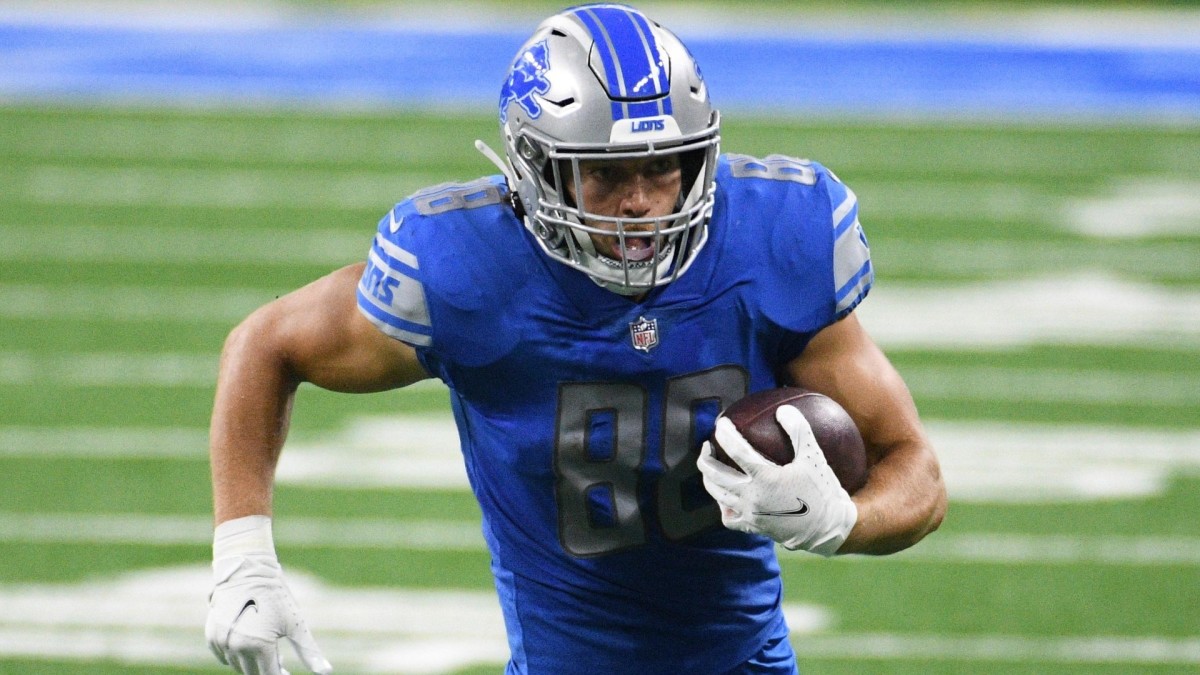
Coming out of Iowa, T.J. Hockenson boasted a stellar profile.
Despite fighting for targets with fellow first-round pick Noah Fant, Hockenson had a 24.0-percent College Dominator (75th) and a 15.5 YPR (80th) to go with excellent athletic testing at the combine, highlighted by his 127.1 Burst Score (90th). He was everything you wanted in a tight end, and Detroit was equally convinced, taking him at the 1.08 draft slot.
Unfortunately, outside of a super-smash game in Week 1 where he went ballistic, dropping a 6-131-1 line on the Cardinals, he was relatively quiet. Granted, he suffered through a concussion, shoulder sprain, and ankle sprain, as well as the loss of quarterback Matthew Stafford, but entering 2020 we had mostly unrealised hopes for Hockenson.
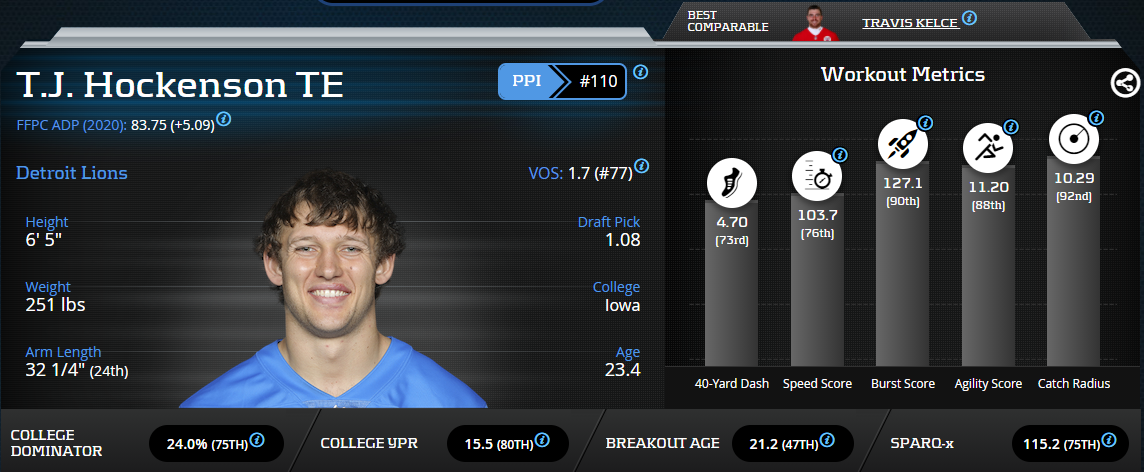
However, since the beginning of the season, Hockenson has looked healthy and dangerous, giving us a glimpse at the player we thought could join the ranks of Travis Kelce and George Kittle in dynasty. He has cemented himself as a threat for Stafford and the Lions with his 13 Red Zone Targets (No. 3) and five touchdowns (No. 3).
Importantly though, he is not simply just a red zone monster:
Hockenson’s 176 Yards After the Catch (No. 7) and 21.4-percent Dominator Rating (No. 9) show us a picture of a player making plays in all phases of the game. While we are still waiting for that boom game like last year, Hockenson has developed into a consistent target who’s already a top-5 option at the position. With players like Kelce getting older and Zach Ertz falling off a cliff this year, Hockenson, who coincidentally is best comparable to Kelce on Player Profiler, looks like the best bet to ascend as the next elite tight end in the league to take their place.


